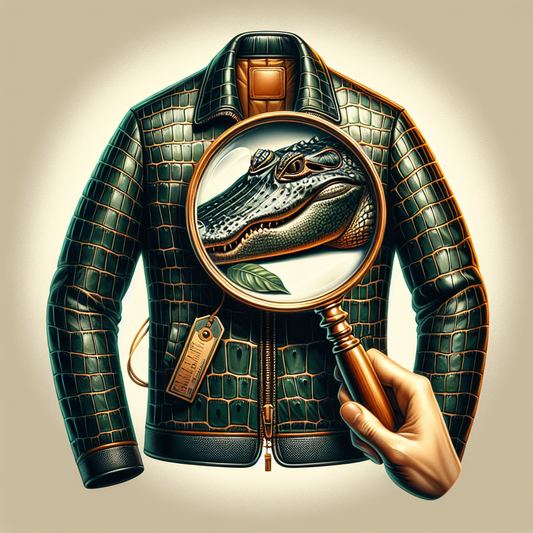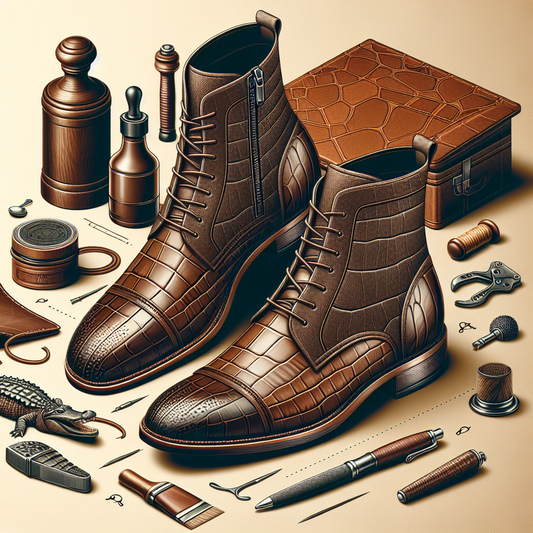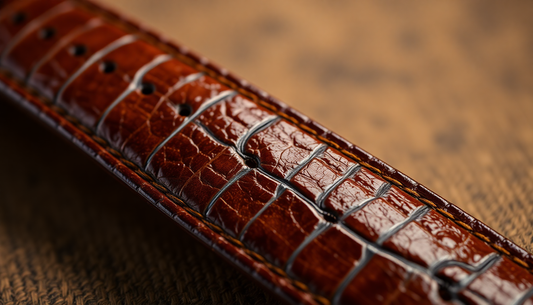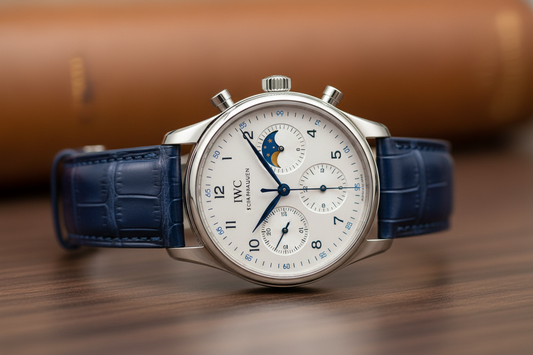What Makes a High-Quality Belt? A Comprehensive Guide to Finding the Perfect Belt
What Makes a High-Quality Belt? A Comprehensive Guide
A belt, seemingly a simple accessory, can be the defining element of an outfit. It can elevate a casual look to sophisticated, or add a touch of refinement to a formal ensemble. But what exactly makes a belt high-quality? It's more than just a piece of leather that holds up your pants. A truly exceptional belt is a testament to craftsmanship, durability, and style, a piece that you'll cherish for years to come.
The Importance of Material: The Foundation of Quality
The foundation of any good belt lies in its material. Choosing the right material is crucial for both durability and aesthetics. Here's a breakdown of the most popular options and their unique qualities:
- Genuine Leather: The gold standard for belts. Full-grain leather is the most sought-after due to its natural beauty, durability, and ability to develop a rich patina over time. It's made from the top layer of the hide, retaining all the natural grain and fibers, resulting in a strong and resilient material. The natural variations in the grain and texture give each full-grain leather belt a unique character. Full-grain leather is also incredibly breathable, making it comfortable to wear even in warmer weather.
- Genuine Alligator Belt Men: For those seeking the ultimate in luxury, genuine alligator belts are a statement piece. These belts are crafted from the highest quality alligator hide, known for its exquisite texture, rarity, and timeless elegance. The scales of an alligator are unique and intricate, creating a visually stunning and tactile experience. A genuine alligator belt buckle often complements the luxurious hide, adding a touch of sophistication and individuality. These buckles can be crafted from precious metals like gold or silver, further enhancing the luxurious appeal of the belt.
- Top-Grain Leather: A more affordable option than full-grain, top-grain leather is still durable and stylish. It's created by removing the top layer of the hide, resulting in a smoother surface. While it may not have the same longevity as full-grain leather, it still offers excellent quality and can be a great choice for those who want a classic look without breaking the bank. Top-grain leather is often treated with a protective finish to enhance its durability and water resistance.
- Split Leather: Made from the lower layers of the hide, split leather is thinner and less durable than full-grain or top-grain leather. It's often used for belts in lower price ranges and may not have the same natural beauty and longevity. Split leather can be more susceptible to wear and tear, especially in areas where the belt is frequently flexed, such as the buckle holes.
- Synthetic Materials: While less expensive, synthetic belts often lack the durability and natural beauty of leather. They may be made from materials like nylon, polyester, or polyurethane, offering a variety of colors and patterns. However, they tend to be less breathable, may not hold their shape as well, and may not age gracefully. Synthetic materials are often used in belts designed for specific activities, such as athletic belts or belts for tactical gear, where durability and performance are paramount.
Craftsmanship: A Sign of Quality and Attention to Detail
Beyond material, the craftsmanship of a belt is a key indicator of its quality. A well-made belt is a testament to the skill and dedication of the artisan. Here's what to look for when assessing craftsmanship:
- Stitching: Even, well-executed stitching is essential for a belt that lasts. Hand-stitched belts are often considered more luxurious and durable. Look for stitching that is evenly spaced, secure, and free from any loose threads or imperfections. The stitching should also be strong and resistant to fraying or unraveling, ensuring the belt remains intact for years to come.
- Buckle: A high-quality buckle should be made of solid materials like stainless steel or brass and should be designed for smooth operation. The buckle should be firmly attached to the belt, free of any wobbles or loose components, and should have a polished finish. A well-crafted buckle should not only be functional but also aesthetically pleasing, complementing the overall design of the belt. Look for buckles with intricate details, elegant engravings, or unique finishes.
- Finishing: A polished edge and a consistent finish throughout the belt indicate meticulous craftsmanship. The edges of the belt should be smooth, rounded, and free of any rough spots or fraying. The surface of the leather should be consistently colored and free of any visible imperfections. The finishing touches on a belt reveal the artisan's attention to detail and commitment to creating a high-quality product.
- Cut and Shape: The way the belt is cut and shaped influences its fit and overall style. Look for belts with smooth, even cuts and a consistent shape throughout the length. The cut should be precise, ensuring that the belt sits comfortably and flat against your waist. The shape of the belt, whether it's straight or slightly curved, will affect its overall appearance and how it drapes over your clothes.
Fit and Style: Personalizing Your Belt
A high-quality belt should not only be well-made but also fit you perfectly and complement your personal style. Consider these factors when choosing a belt:
- Length: The belt should fit snugly around your waist, leaving enough room for the buckle to fasten comfortably. A properly fitted belt will sit comfortably without being too tight or too loose. You should be able to comfortably slide two fingers between the belt and your waist. A belt that is too short will be uncomfortable to wear, and one that is too long can create a sloppy appearance.
- Width: Belt width can impact the overall style of your outfit. A wider belt (1.5 inches or more) can add a bolder statement, while a narrower belt (1 inch or less) creates a more refined look. Consider the width of your belt in relation to the size of your build and the occasion for which you're wearing it. For example, a wider belt might be more suitable for a casual outfit, while a narrower belt would be a better choice for a formal occasion.
- Color and Design: Choose a color and design that complements your wardrobe and personal style. A classic black or brown belt is versatile and can be worn with a wide range of outfits. For a bolder statement, consider a patterned belt or a belt in a vibrant color. A patterned belt, such as one with a subtle weave or a geometric design, can add visual interest and personality to your outfit. A vibrant belt, in a color like red, blue, or green, can create a focal point and brighten up a neutral outfit. If you're unsure about a particular color or design, consider trying it on with a few different outfits to see how it looks.
Invest in Quality, Invest in Style and Longevity
A high-quality belt is an investment in style and durability. It's a piece that you'll cherish for years to come. While a genuine alligator belt men with a genuine alligator belt buckle might be a significant investment, it's an heirloom piece that can be passed down for generations. The exquisite texture and rarity of alligator leather, combined with meticulous craftsmanship, create a belt that is both luxurious and timeless.
Investing in a high-quality belt means you're not just buying a piece of clothing; you're investing in craftsmanship, longevity, and style. It's a piece that will elevate your look, make you feel confident, and last for years to come.
Regardless of your budget, by focusing on material, craftsmanship, and fit, you can find a belt that elevates your look and lasts a lifetime. A good belt is not just about functionality; it's about making a statement, expressing your personal style, and adding a touch of elegance to your wardrobe.








